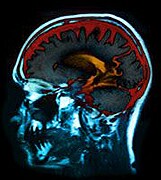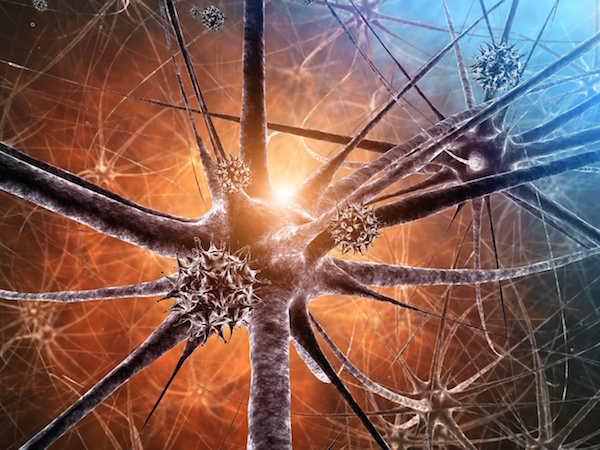
THURSDAY, Dec. 16 (HealthDay News) — Researchers who have studied a woman with a missing amygdala — the part of the brain believed to generate fear — report that their findings may help improve treatment for post-traumatic stress disorder (PTSD) and other anxiety disorders.
In perhaps the first human study confirming that the almond-shaped structure is crucial for triggering fear, researchers at the University of Iowa monitored a 44-year-old woman’s response to typically frightening stimuli such as snakes, spiders, horror films and a haunted house, and asked about traumatic experiences in her past.
The woman, identified as S.M., does not seem to fear a wide range of stimuli that would normally frighten most people. Scientists have been studying her for the past 20 years, and their prior research had already determined that the woman cannot recognize fear in others’ facial expressions.
S.M. suffers from an extremely rare disease that destroyed her amygdala. Future observations will determine if her condition affects anxiety levels for everyday stressors such as finance or health issues, said study author Justin Feinstein, a University of Iowa doctoral student studying clinical neuropsychology.
“Certainly, when it comes to fear, she’s missing it,” Feinstein said. “She’s so unique in her presentation.”
Researchers said the study, reported in the Dec. 16 issue of the journal Current Biology, could lead to new treatment strategies for PTSD and anxiety disorders. According to the U.S. National Institute of Mental Health, more than 7.7 million Americans are affected by the condition, and a 2008 analysis predicted that 300,000 soldiers returning from combat in the Middle East would experience PTSD.
“Because of her brain damage, [the patient] appears to be immune to PTSD,” Feinstein said, noting that she is otherwise cognitively typical and experiences other emotions such as happiness and sadness.
In addition to recording her responses to spiders, snakes and other scary stimuli, the researchers measured her experience of fear using many standardized questionnaires that probed various aspects of the emotion, such as fear of death or fear of public speaking. She also carried a computerized emotion diary for three months that randomly asked her to rate her fear level throughout the day.
Perhaps most notable, Feinstein said, are her many near-misses with peril because of her inability to avoid dangerous circumstances. In one case, when she was 30, she approached a drugged out-looking man late one night who pulled a knife and threatened to kill her.
Because of her complete absence of fear, the woman — who heard a choir singing in a nearby church — responded, “If you’re going to kill me, you’re going to have to go through my God’s angels first.” The man abruptly let her go.
The mother of three was also seen by her children approaching and picking up a large snake near their home with no seeming regard for its ability to harm her, Feinstein said.
“Its a perfect example of the sort of situation she gets herself in that anyone without brain damage would be able to avoid,” Feinstein said. “With her brain damage, she’s so trusting, so approachable to everything. In hindsight, [her response to the man with the knife] may have saved her life because the guy got freaked out.”
Alicia Izquierdo, an assistant professor of psychology at California State University in Los Angeles, said the study results add to existing evidence that the amygdala should be targeted in developing therapies for phobias, anxiety disorders and PTSD, “where too much fear is a bad thing.”
“In small doses, fear is a good thing — it keeps us alive,” Izquierdo said. “For many years, we have known from studies in rodents and monkeys that the amygdala is necessary for the normal expression of fear. Those who study the amygdala in animals are limited, however . . . and can only speculate about what this brain region does for the experience of fear.”
“This is one reason why the study . . . is so meaningful: We can now say that the amygdala is important for the expression and the subjective experience of fear,” she added.
Feinstein said PTSD treatment tactics targeting the amygdala would not involve surgically removing or altering it. Rather, it is thought that the amygdala’s hyperactive response in frightening situations can be modified over time through repetitively doing things a patient considers scary.
“This prolonged exposure therapy involves approaching the things causing them distress and fear the most,” Feinstein said. “We don’t ever want to surgically alter this area.”
More information
For more on PTSD, go to the U.S. National Institute of Mental Health.

